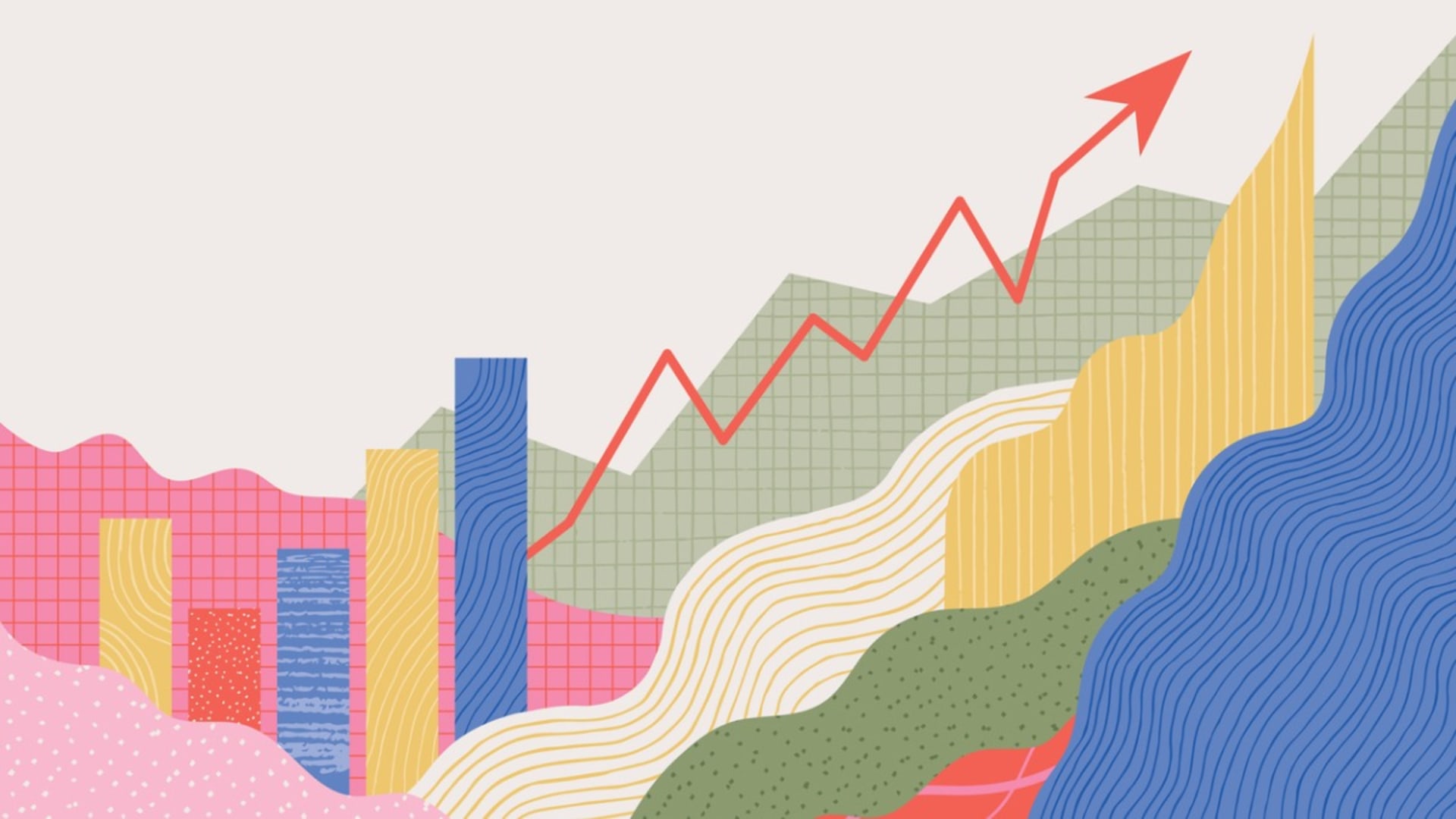Data has become synonymous with big business. It is not only used to keep track of customers and products, but it’s also used to predict trends, help with marketing campaigns, improve operations, provide positive customer service experience, and (ultimately) help to increase profits. But without the best Python data visualization libraries, your company could struggle to do anything with those massive troves of information.
To make the most of these tools and streamline development workflows, exploring the best Python libraries is essential for building powerful, data-driven solutions efficiently.
Most every business, large or small, around the globe, depends on data to not only function but to compete and grow. Without data, many businesses would fall behind or fail completely.
But data alone is not enough. Imagine you have collected a massive trove of information that you are 100% certain will help carry your company to the next level of competitiveness. That collection of data is of no use to you as is because it would take a data scientist a lifetime of scouring through the information and making sense of it. That’s where the data visualization library comes into play.
With data visualization, you can take that trove of data and create easy-to-consume visualizations that make it exponentially easier to glean the necessary information to help make your company more viable, marketable, and profitable. Instead of having to comb through tables and documents, you can create Python applications to display that data in ways that make it possible to draw conclusions or even build roadmaps for the future of your business.
To build these applications efficiently, using one of the best Python IDE and text editor options can greatly enhance developer productivity and streamline coding workflows.
With the right data visualization library, you can create interactive plots and other visualizations from your data that are easy to read and use.
Why Is Choosing the Right Python Data Visualization Libraries Important?
Now that you understand why data visualization is important, you now need to know why choosing the right library is the next crucial phase of the process.
One of the most important reasons for choosing a particular data visualization library is the type of visualization you want. Some libraries are great at generating interactive plots from data. However, a plot might not be the best option for your users or your data. You might prefer a graph or a streaming dashboard with real-time updates. Or maybe you prefer a map.
Knowing the type of visualization you need is important to success with the visualization library you select. Because of this, you want to make sure to select the right library.
Another reason that easily illustrates the importance of making the right selection is knowing the format of visualization you want. You might need to work with SVG, PNG, Browser, and PyQuery formats. Should that be the case, you’ll want to select a Python data visualization library that offers the format you need, otherwise you might find yourself in a situation where you’re having to convert from one format to another, which can complicate the process.
Things To Consider When Choosing a Python Data Visualization Library
Let’s now take a look at some of the things you should consider when choosing your Python data visualization library. One thing to keep in mind is that not every bullet point will apply to your business, but it’s always good to employ a “the more you know” approach.
- Types of visualizations: Remember to choose a data visualization library that is capable of creating the visualization you need.
- Output format: Make sure to select a data visualization library that can output your visualizations in a format you can use (e.g., SVG, PDF, or PNG).
- Input format: You will also need to choose a data visualization library that can work with the type of data you have (e.g., structured versus unstructured).
- Compatibility: Select a data visualization library that is compatible with the web browsers you use. This shouldn’t be an issue, but it’s always best to be certain.
- Learning curve: Some data visualization libraries are considerably easier to learn than others. Data science is already a complicated process, and if your teams are comfortable with learning yet another skill, you’ll want to select a library that offers a shallow learning curve.
Now that you know what a data visualization library is and what you should consider when selecting one, let’s dive into the different libraries that are available to Python.
The Top 5 Python Data Visualization Packages and Libraries

Any of the following data visualization libraries would be an outstanding choice for your company, but do keep in mind the considerations above before making your selection.
#1 Matplotlib
Matplotlib is a Python data visualization library that was first released in 2003 and has become one of the most popular plotting libraries for the language. Matplotlib offers an interactive environment on all platforms that support Python and can be used in Python scripts, IPython shells, Jupyter Notebook, and even in web applications.
With Matplotlib you can embed outputted plots into applications with the help of Python GUI libraries, such as Tkinter and wxPython.
One of the many reasons why Matplotlib is so popular is that it can create plots, bar charts, pie charts, histograms, scatter plots, error charts, power spectra, and stemplots. And with a MATLAB-like UI, it should be immediately familiar to your data science teams.
Key Features
- Can create numerous types of visualizations.
- Open source and free to use.
- Can create publication-quality visualizations.
- Creates interactive figures that can zoom, pan, and update.
- Allows for the customization of styles and layouts.
- Visualizations can be exported to numerous file formats.
- Can be embedded in JupyterLab and other GUIs.
| PROS | CONS |
| Versatile | Steep learning curve |
| Accessible | Users must understand Python |
| Highly customizable | Users should also know the syntax of MATLAB |
| Plugs into plenty of backends |
#2 Plotly
Plotly was built on the Plotly JavaScript library and is another well-respected Python data visualization library. In fact, most consider Plotly to be the best library for the purpose. With Plotly, you can create highly interactive data visualizations that make it easy to switch between single and multiple data points with only a single piece of code. And, with Plotly, you have all the same functions found in Matplotlib as well as the ability to dive deeper into the details of your data and even create histograms.
With Plotly being written completely in Python, it is fully customizable, so you can create the exact visualizations you need, as well as interactive dashboards capable of presenting multiple visualizations to users without having to create separate views for each.
Plotly greatly simplifies the creation of web-based data visualizations that can be displayed in Jupyter Notebooks, web applications, or even web browsers (via exported HTML files). You’ll find over 40 unique chart types (such as scatter plots, histograms, line charts, bar charts, pie charts, error bars, box plots, multiple axes, sparklines, dendrograms, 3D charts, and even contour plots).
Key Features
- Creates very functional, interactive, and customizable visualizations.
- Can create over 40 different types of visualizations.
- Can be used on- or offline.
| PROS | CONS |
| Creates very easy-to-view visualizations. | Very steep learning curve. |
| Can create highly interactive visualizations. | Users must know Python. |
| More flexible than most data visualization libraries. | Uses its own syntax. |
| Figures can be exported with just a few lines of code. | Challenging setup. |
| Documentation is badly out of date. |
#3 Seaborn
Seaborn is really just an add-on to Matplotlib that makes it easier to create more aesthetically pleasing visualizations. With a few quick (and easy) changes to the code, you can alter the color scheme and even create complex visualizations without having to code copious and complex functions.
Although you can use just Seaborn, you might find it’s a bit basic and is better off when used in conjunction with Matplotlib. With this combination, you can create numerous data visualizations that are more modern in their styling.
Seaborn includes dataset-oriented plotting functions that can operate on data frames and arrays that include complete datasets. The visualizations Seaborn can create include bar charts, pie charts, histograms, scatter plots, and error charts. Seaborn also includes tools for choosing color palettes that help make the discovery of data patterns considerably easier.
Key Features
- Includes a number of themes.
- Can visualize univariate and bivariate data.
- Supports linear regression models and plotting statistical time series data.
- Works with both NumPy and Pandas data structures.
| PROS | CONS |
| Makes creating visualizations quick and easy. | Very limited customizations. |
| Resultant visualizations are modern-looking. | Visualizations tend to be more static. |
| May require the use of another library to gain all the necessary functions you need. |
#4 Ggplot
Ggplot is the Python data visualization library based on ggplot2, which was created for the R programming language. With Ggplot you can create numerous types of visualizations, such as bar charts, pie charts, histograms, scatter plots, and error charts. Ggplot also allows for the use of different types of data components and layers to create a single visualization.
Ggplot offers a very simple process, which involves mapping variables to aesthetics. Once you’ve done that, Ggplot does the rest of the work. By simplifying the process, data scientists (or other users) can spend more time analyzing the visualizations instead of creating them.
The one major drawback of Ggplot is that you cannot create highly customizable graphics. And because Ggplot is intertwined with Pandas, you’ll find more success by keeping your data within Dataframes.
Key Features // Product Highlights
- Supports statistical transformations.
- Users can change data scale in accordance with meaning.
- Can map data values to 2D visualizations.
- Supports the plotting of subsets into panels within the same plot.
- Powerful theming system.
| PROS | CONS |
| Consistent syntax. | Does not handle all types of output. |
| Very intuitive. | |
| Highly customizable. | |
| Mature and complete system for graphics. | |
| Very active community. | |
| Numerous output types, including eps, ps, pdf, jpeg, tiff, png, bmp, svg, and wmf. |
#5 Altair
Altair is based on Vega, which is a declarative language for creating, saving, and sharing interactive data visualizations. With Altair, you can create bar charts, pie charts, histograms, scatter plots, error charts, power spectra, and step plots using very few lines of code.
Most consider Altair to be one of the best declarative statistical data visualization libraries for Python development services. Altair is very user-friendly, has a consistent API (built on the Vega-lite JSON spec), is open source, and creates stunning visualizations. Although Altair does have a number of dependencies (python 3.6, entrypoints, jsonschema, NumPy, Pandas, and Toolz), they are all installed automatically.
Key Features
- Outstanding visuals can be created with minimal code.
- Uses declarative grammar for both visualizations and interactions.
- Supports data aggregation, filtering, and dynamic filtering.
| PROS | CONS |
| Minimal code required. | Number of installation requirements. |
| Very intuitive and structured. | Not as customizable as other libraries. |
| Marks specify how the data is represented in the plot. | No 3D visualization. |
| Highly flexible. |
Conclusion
When it comes to data visualizations, Python is a great language to employ, and having the right library to make that happen is a must. Because Python is such an easy language to learn, your teams should have very little trouble creating visualizations that can make it possible for your business to leverage data in more ways than you can imagine. Any one of these libraries would do a fine job of helping to make this possible.
Partnering with expert Python development services can help ensure your teams follow best practices and build reliable, scalable visualization solutions that meet your business needs.
One thing to keep in mind, however, is that your development teams will need to employ Python best practices to ensure the applications they create to work with these libraries are reliable, secure, and can meet the growing demands of your company. To strengthen your capabilities and scale efficiently, consider outsourced Python development to bring in top-tier expertise and accelerate your projects.







